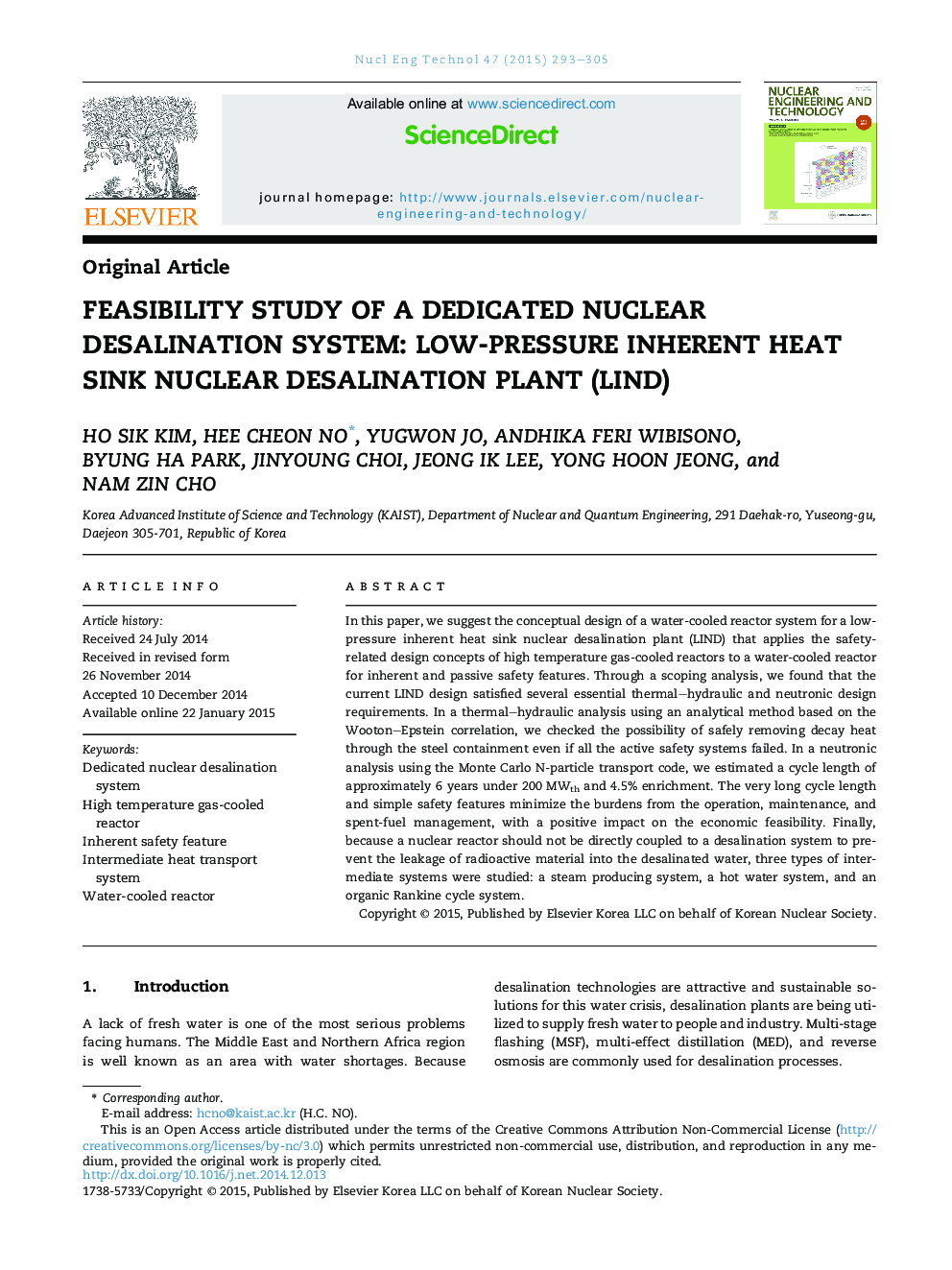| Article ID | Journal | Published Year | Pages | File Type |
|---|---|---|---|---|
| 1740162 | Nuclear Engineering and Technology | 2015 | 13 Pages |
In this paper, we suggest the conceptual design of a water-cooled reactor system for a low-pressure inherent heat sink nuclear desalination plant (LIND) that applies the safety-related design concepts of high temperature gas-cooled reactors to a water-cooled reactor for inherent and passive safety features. Through a scoping analysis, we found that the current LIND design satisfied several essential thermal–hydraulic and neutronic design requirements. In a thermal–hydraulic analysis using an analytical method based on the Wooton–Epstein correlation, we checked the possibility of safely removing decay heat through the steel containment even if all the active safety systems failed. In a neutronic analysis using the Monte Carlo N-particle transport code, we estimated a cycle length of approximately 6 years under 200 MWth and 4.5% enrichment. The very long cycle length and simple safety features minimize the burdens from the operation, maintenance, and spent-fuel management, with a positive impact on the economic feasibility. Finally, because a nuclear reactor should not be directly coupled to a desalination system to prevent the leakage of radioactive material into the desalinated water, three types of intermediate systems were studied: a steam producing system, a hot water system, and an organic Rankine cycle system.
